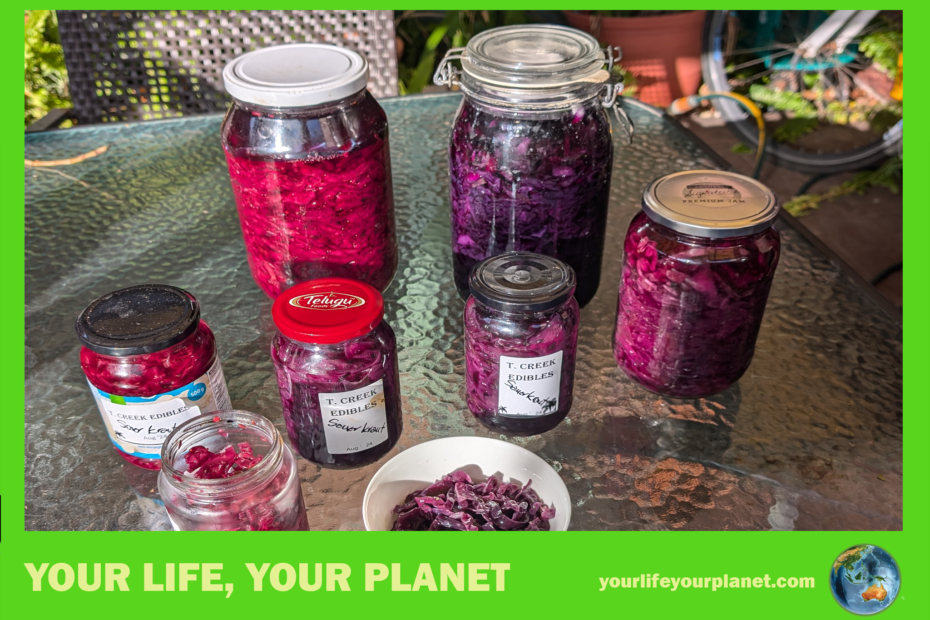Beer and bread are not the only fermented food fit for humans. Fermentation a traditional method of preserving fresh food to feed us when there is nothing in the garden or on the grocery shelves.
When I have a good crop of cabbage my neighbours have a good crop of cabbage. You literally can’t give the stuff away. Trying to convince people to grow food by offering them whatever is cheapest in the shop is not the greatest selling point, so what’s a successful cabbage grower to do?
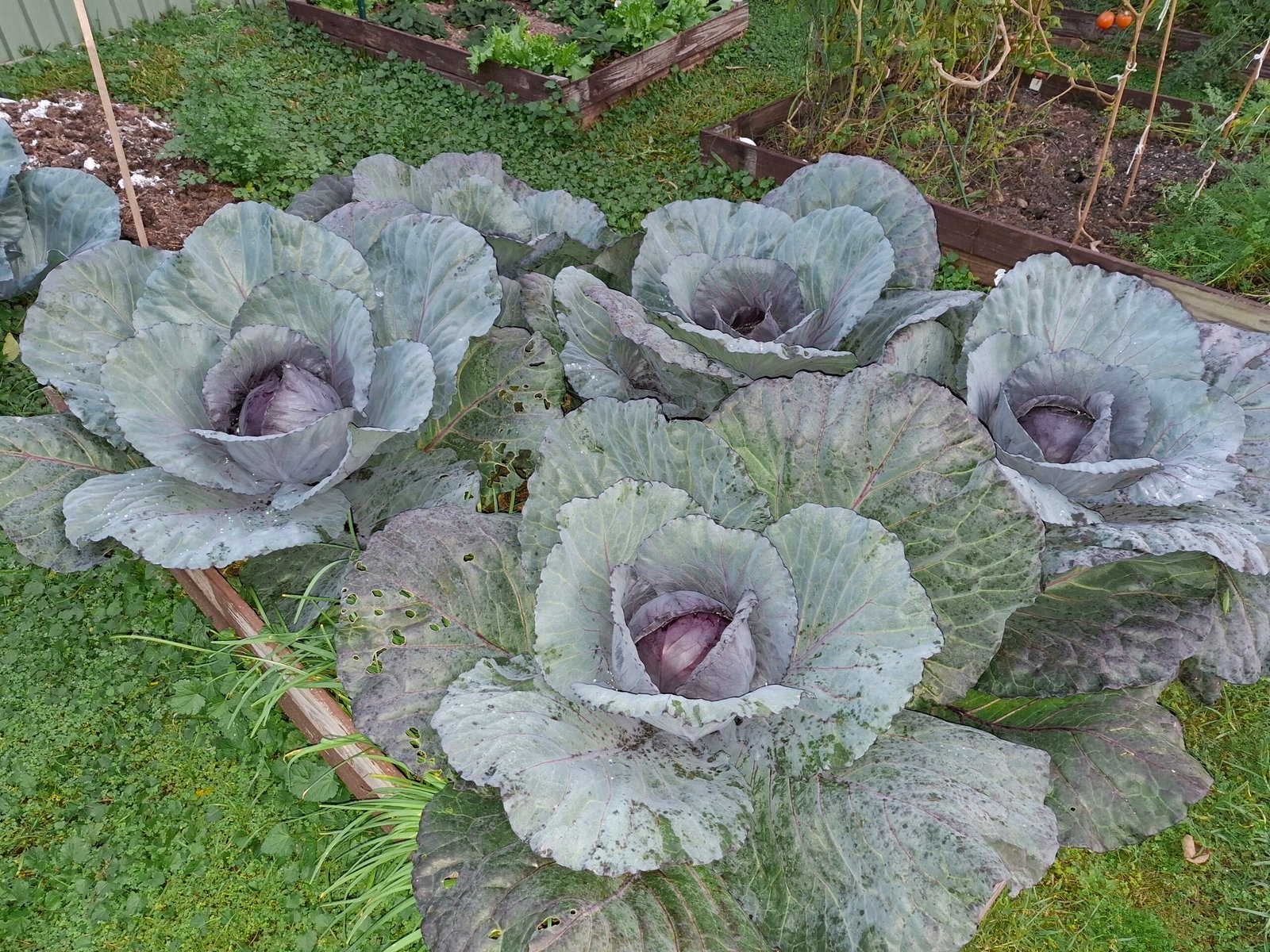
Ferment the lot! Fermentation as preservation is as old as the hills. The microbes that turn cabbage into sauerkraut, kimchi, gundruck or any of the other many ferments based on leafy greens start the process of breaking down the complex carbohydrates that are hardest to digest, releasing more nutrients for us. In the process they stabilise the food so that it does not continue to decay into a poisonous sludge. Handy!
There are many texts on fermentation, I turn to Bill Mollison’s Ferment and Human Nutrition when I feel like browsing but, like most of us, use the world wide web if I want to quickly scan a range of methods for pickling something that I am picking by the wheelbarrow full.

I grew a lovely lot of cabbage this winter (sub-tropical Brisbane, remember) and the following pictures show me slicing, salting, pressing and then bottling the cabbage, and the resulting sauerkraut.
I remove the bulk of the central stem by cutting the cabbage in four, slicing out the stem, and then slicing the leaves fairly finely. I put the lot in a sterile glass bowl and liberally sprinkle with salt and put a plate over the top to stop stray yeasts, bacteria and other microbes joining the party.
This lot has been flavoured with carraway, a favourite of the German and Swiss sauerkraut gurus who I seek guidance from, and I just sprinkle the seed over the raw leaves as I salt them. I salt two or three times as I fill the bowl, so I do not have to stir and press the cabbage as I make it. I slice and salt, then turn and squeeze between six and 12 hours later, then twice the next day and then finally before bottling on the third day.
I wash and dry the jars after cutting the cabbage, and sterilise them in the oven the day I am going to bottle the cabbage. I use tongs to push the cabbage into the big jars, and use chopsticks to release any trapped pockets of air. I repeat the piercing process after a week of fermenting, just to keep it on the move.
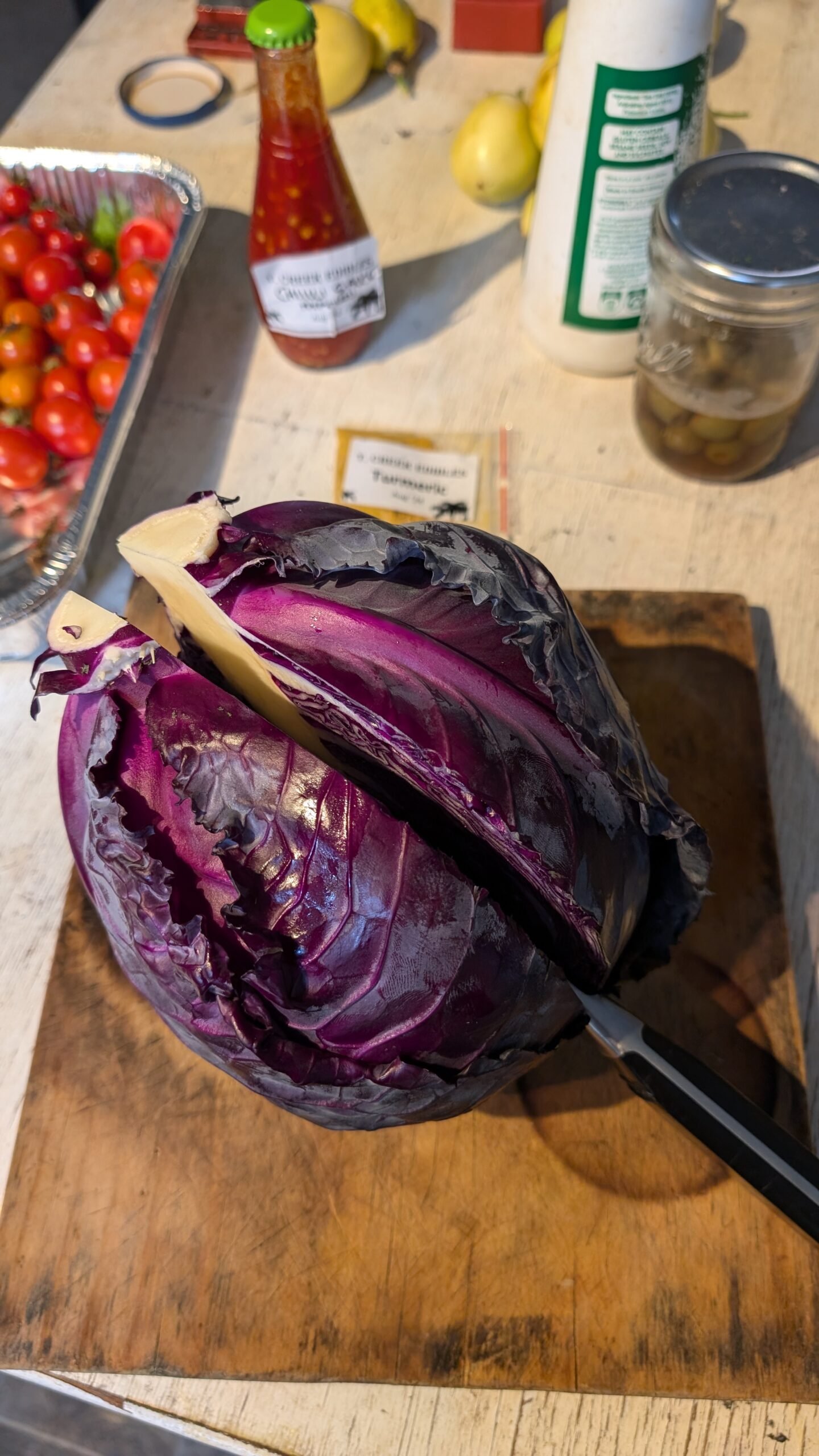
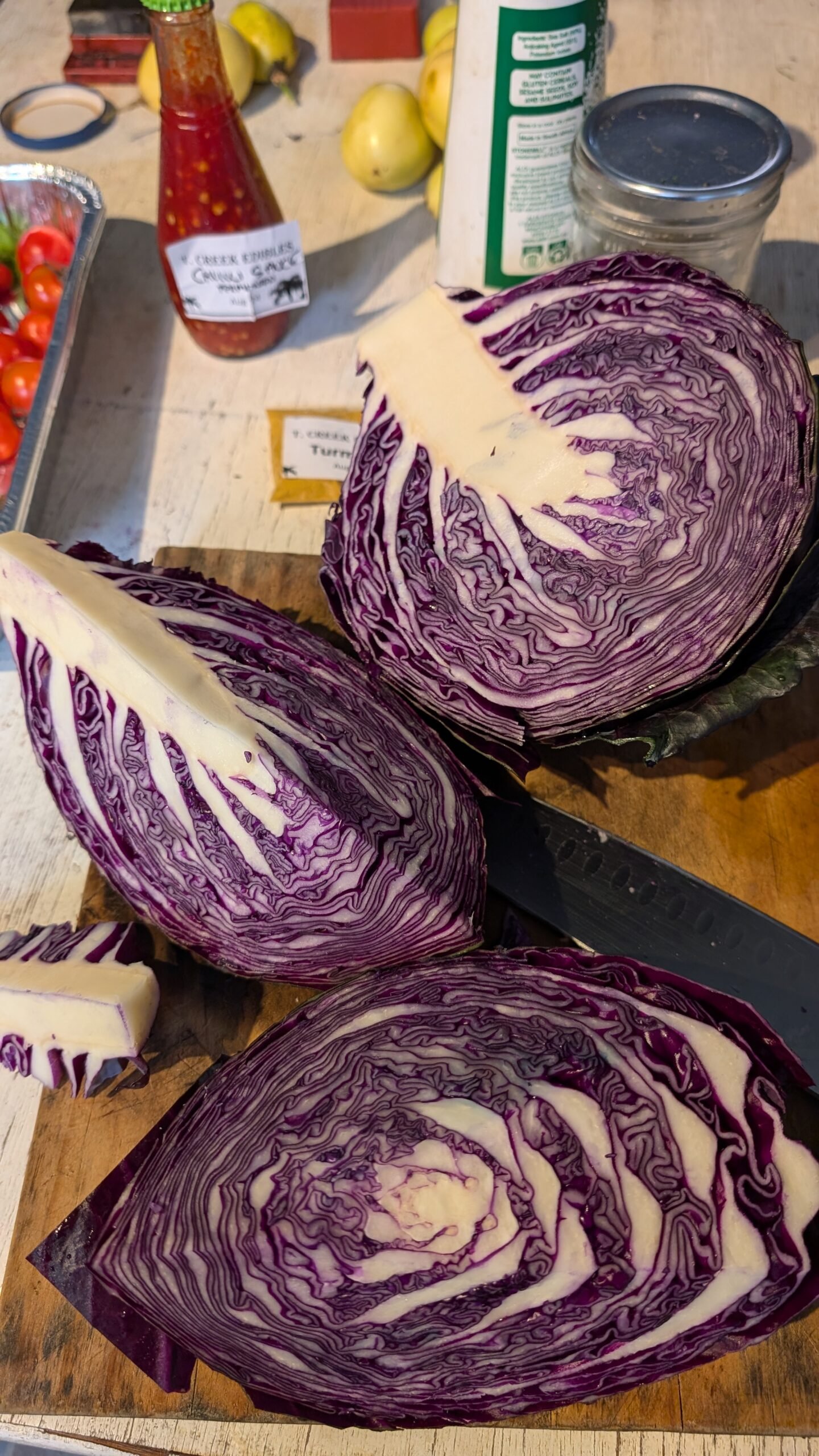
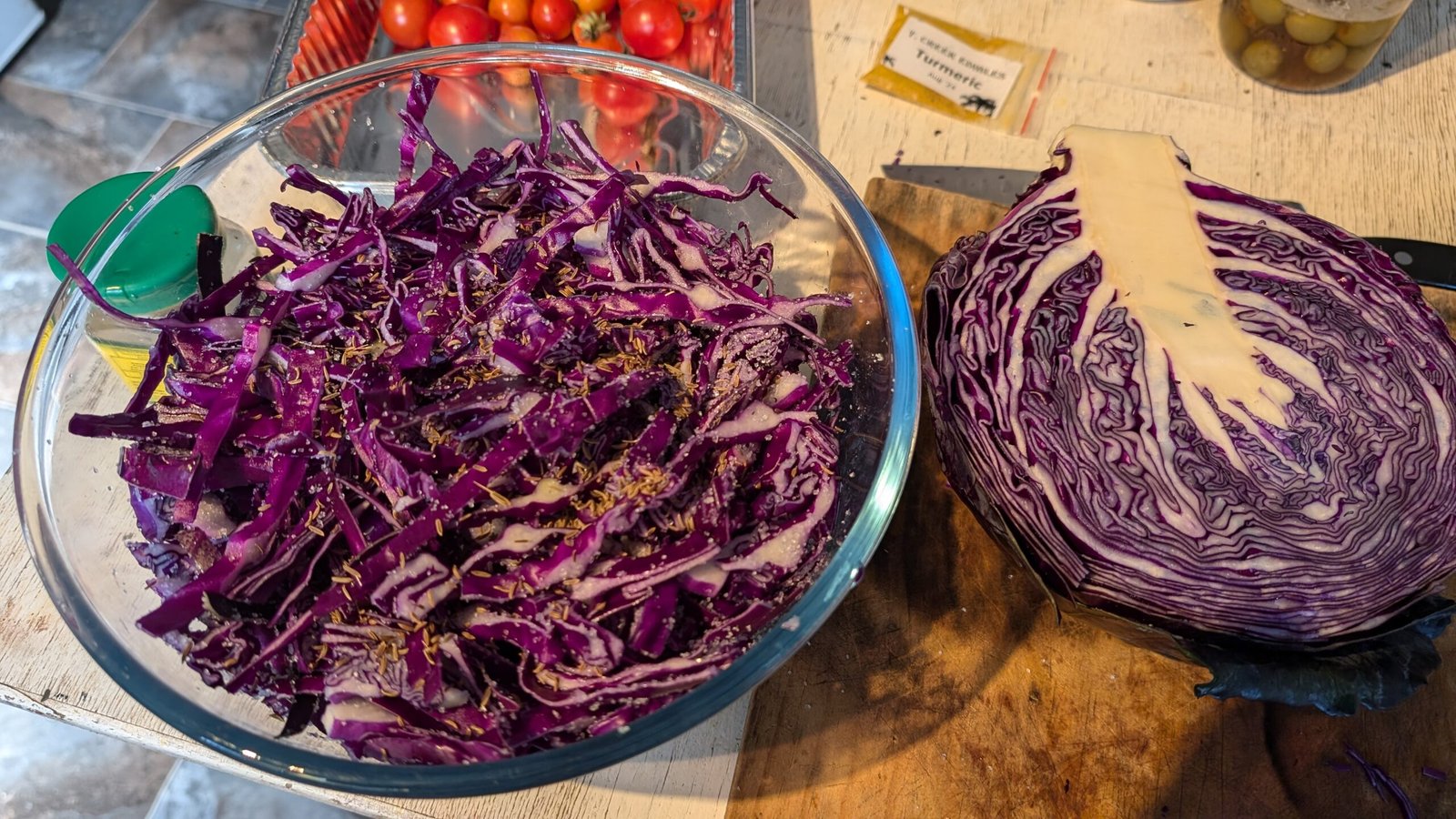
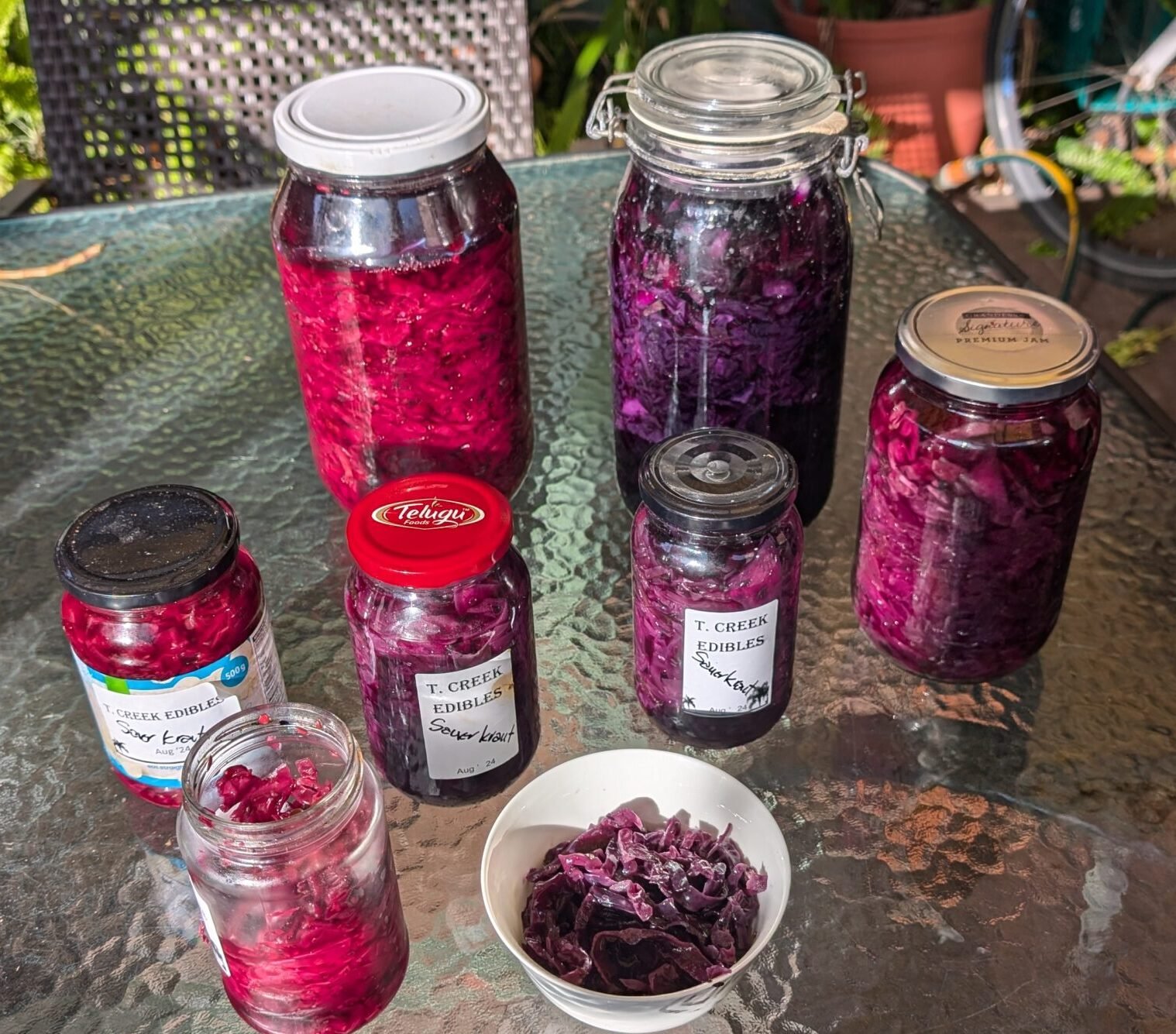
The collection of bottled sauerkraut pictured here contains the two big jars which have not been touched for over three weeks, you can see the carbon dioxide that has come from the fermentation process collecting in the sauerkraut. The small jars were decanted from the big ones after three and five weeks in the big jar, and they have largely finished fermenting, there is little new carbon dioxide in those jars.
It looks like a simple process, and it is, once you know the tricks to stop it going wrong. If it does go wrong you can end up with a very smelly mess, and bad cabbage, like bad potatoes, can make a pantry unpleasant for a very long time.

Salt is the basic preservative in sauerkraut and it also brings the moisture out of the leaves to create the brine in which it ferments. Salt the leaves as soon as you slice them, and start squeezing and turning them, as soon as you see the moisture collecting in the bottom.
Part of my reason for doing this quickly is that Brisbane springs are very warm, and there are a lot of yeasts and other microorganisms in my kitchen, so I need to get raw foods into a preservative environment pretty quickly.
The most challenging part for me, has been finding ways to ensure that the leaves stay below the brine and do not float to the top and come in contact with oxygen, which starts the rot and quikcly ruins the entire bottle. You might notice that one of the big jars has a black plastic disk separating the cabbage from the brine, pushed into the brine by a drinking glass. The other has a white espresso cup performing a similar function. Serious sauerkraut makers, have custom made wooden or glass disks that fit their ferment barrels perfectly and keep the cabbage out of the air.
After a few sad experiences with sauerkraut going bad by coming in contact with the air I probably oversalt slightly. The darker ferment shown here has a little more salt than ideal, I tend to use it in dishes that I would normally salt a lot, allowing the cabbage to act as the source of salt. I have washed it before using it as a side dish, but that removes a lot of the flavour as well. Lightly frying onions and parsley without salt and then mixing the sauerkraut in makes a great side dish that does not taste oversalty.
Other stories on fermenting and preserving food:
